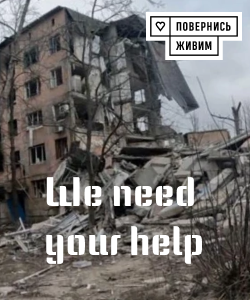Zelensky warns: Russia intensifies heavy weaponry and ambushes Ukrainian soldiers
On Sunday, by 4 p.m., the situation at the front remained tense, as there was a renewed increase in the use of Russian heavy equipment and active hostilities. President Volodymyr Zelensky reported this following an operational briefing from Commander-in-Chief of the Ukrainian Armed Forces Oleksandr Syrskyi. The president emphasized that the enemy is increasing the intensity of hostilities by broadly deploying heavy weapons. According to him, from the beginning of the day until noon, a total of 46 Russian assault attacks have been recorded across various directions, along with over 900 shellings of Ukraine’s border zones. Of these, 448 incidents involved the use of heavy machinery and artillery. It is also worth noting that the Russians have intensified the use of FPV combat drones, with over 400 recorded deployments. The situation remained particularly tense on the Pokovsk direction, where Russian forces showed significant combat activity, conducting massive shellings, including during the Easter holidays. At the same time, Zelensky reported that Russia is making illusory claims about a "ceasefire" in several regions — Kursk region, Siversk, and other front segments. However, the Russian leadership continues to ignore this promise and persists in military actions. The worse news for Ukrainian defenders is that in the Toretsk direction, Ukrainian troops fell into an ambush set by Russian forces. As a result, there are casualties among Ukrainian servicemen. The president promised that those responsible for this tragedy will be held accountable and eliminated. Zelensky underscored that the Ukrainian army will act in a corresponding manner in response to enemy aggression. "This Easter has vividly shown that Russia is the source of the war and the main reason for its prolongation," he stated. According to him, Kyiv is committed to peace and advocates for an honest, unconditional ceasefire that could last at least 30 days. Currently, Moscow has not provided a concrete response to these proposals. The president expressed the conviction that to stop the war, it is necessary to increase pressure on the Russian leadership and ensure strict control over the actions of occupation forces. Only then, he believes, will long-awaited peace and stabilization at the front be possible. Background of the conflict From the very beginning of Easter, the Kremlin officially announced a "Easter ceasefire," claiming to establish a "great holiday truce." According to this initiative, Russia declared a cessation of hostilities from the evening of April 19 until the evening of April 21. The Russian Defense Ministry stated that the aggressors would observe a silence regime provided Kyiv would also refrain from shelling. Ukraine assessed this declaration as propaganda maneuvers and issued a firm response: Ukraine would not cease defensive actions and would act mirror-like. However, according to independent observers and the monitoring project DeepState, none of the fronts experienced the promised Russian "Easter truce." On the contrary — by the morning of April 20, the situation worsened significantly: Russian occupiers intensified the use of heavy equipment and kamikaze drones. According to the Ukrainian General Staff, as of 4 p.m. on Sunday, 45 combat clashes and over 20 shellings were recorded, especially in the Pokovsk direction, despite the enemy’s claims of a "regime of silence." Overall, despite Kremlin promises of a "ceasefire," actual hostilities in eastern Ukraine continue with renewed force, as confirmed by field reports and Ukrainian military testimonies. The situation leaves little hope for a swift and comprehensive end to the war without significant political and military efforts.

